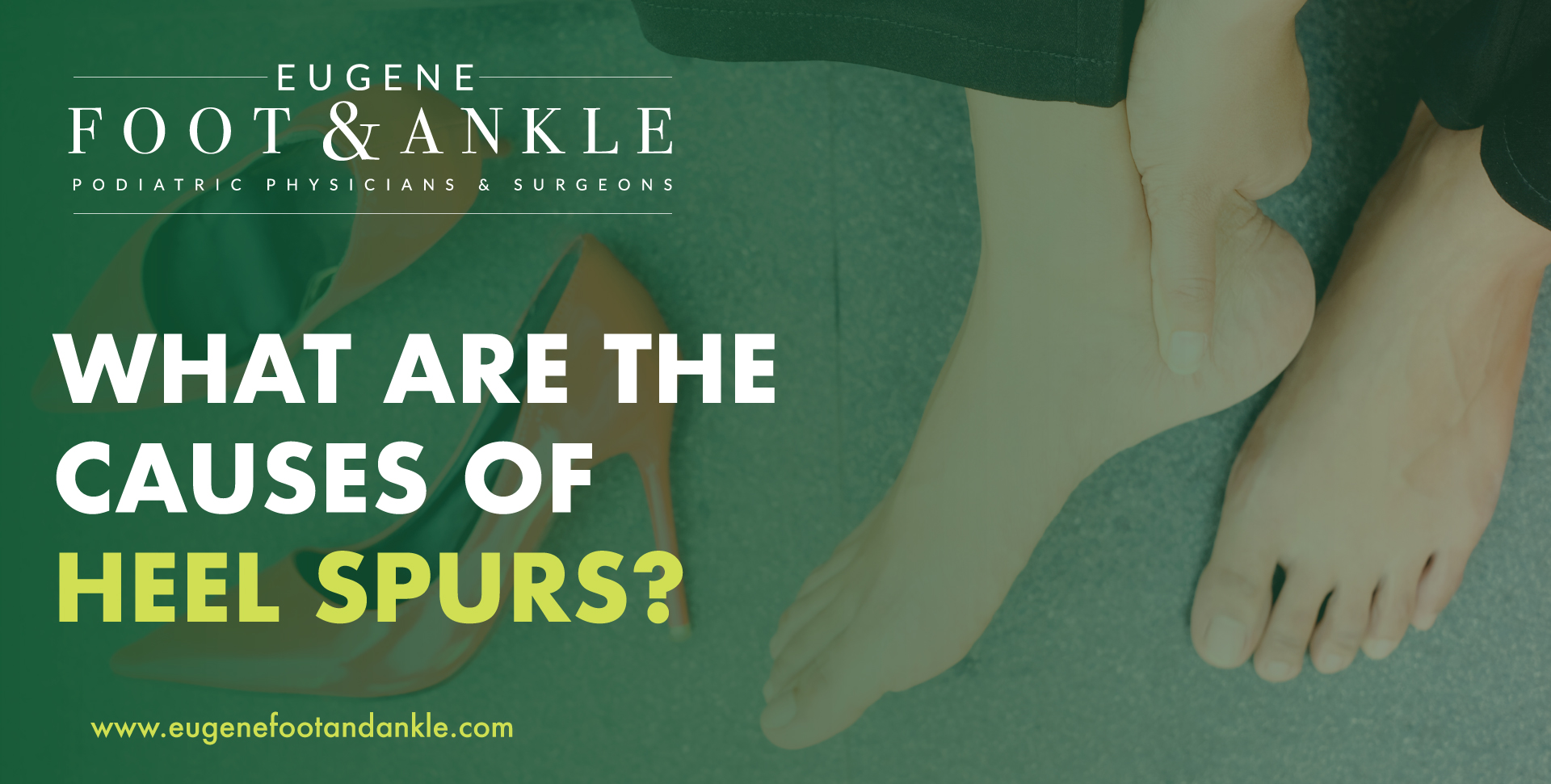What Are the Causes of Heel Spurs?
Visible bony protrusions that grow beyond the back of your heel bone are the most obvious signs of heel spurs. However, most of the time, heel spurs are not visible and are instead diagnosed after seeking treatment from a podiatrist for heel pain. More often than not, plantar fasciitis, tendon tears, or tendon inflammation are the causes of heel spurs. Here’s what to know about these common causes of heel spurs.

Leading Causes of Heel Spurs
Heel spurs often develop slowly, over months or years, as the body responds to chronic inflammation and irritation. Heel spurs in and of themselves typically don’t cause pain. Instead, you’re likely to experience heel pain from another condition, such as plantar fasciitis or Achilles tendonitis.
Plantar Fasciitis
It is estimated that 1 in 10 people will develop plantar fasciitis sometime in their life. The thick band of tissue that runs along the bottom of the foot is called the plantar fascia. The plantar fascia connects the heel to the ball of the foot and, ultimately, your toes. When this band becomes inflamed and irritated, you’ll be diagnosed with plantar fasciitis.
Plantar fasciitis is one of the leading causes of heel spurs. The reason? Ongoing inflammation and stress due to the irritated plantar fascia prompt the body to begin building extra bone tissue on the heel.
Insertional Achilles Tendonitis
Achilles tendonitis also causes heel pain and is one of the leading causes of heel spurs. The Achilles tendon connects the heel to the calf muscle. When this tendon becomes inflamed or irritated, small tears (insertional tears or microtears) can develop in the tendon. This may lead to the development of a heel spur because the tightened tendon pulls on the heel bone, prompting the growth of bone tissue.
How is Heel Pain Treated?
Heel pain is very common, and as such, there are many non-surgical potential treatments that often alleviate pain and allow the irritated tissue and tendon to heal. Non-surgical treatment options may include a combination of any of the following.
- R.I.C.E (resting, icing, compression, and elevation of the foot)
- Anti-Inflammatory Medications
- Over-The-Counter Pain Medication
- Custom Orthotics (shoe inserts)
- Change in footwear
- Limiting certain activities (high-impact exercises)
- Physical Therapy
- Steroid injections
If your heel pain persists, your podiatrist may recommend one of several regenerative therapies, including:
- Platelet Rich Plasma (PRP) injections
- Shockwave Therapy
Fortunately, surgery is rarely needed to treat plantar fasciitis or Achilles tendonitis. The exception is the complete rupture of the Achilles tendon. Likewise, heel spurs will only require surgery if the bony growth is large enough to cause difficulty wearing shoes.

Get Relief from Heel Pain in Lane County
Heel pain is common, but it can negatively impact your quality of life. Fortunately, most podiatric conditions that cause heel pain respond well to non-surgical treatments available at Eugene Foot & Ankle. Our expert podiatrists and podiatric surgeons offer the latest in conservative and regenerative therapies for heel and foot pain. To get relief from heel pain, book an appointment at Eugene Foot and Ankle today by calling 541-683-3351. If you prefer, you may send us a message to request an appointment.
Contact Us
Eugene
Hours:
Monday............ 8:00am - 5:00pm
Tuesday............ 8:00am - 5:00pm
Wednesday............ 8:00am - 5:00pm
Thursday............ 8:00am - 5:00pm
Friday............ 8:00am - 4:00pm (Only available on phones)
Closed for lunch from 12pm - 1pm and closed until 1:30pm on Tuesdays
© Copyright 2025 Eugene Foot and Ankle. All Rights Reserved. | Privacy Policy.
